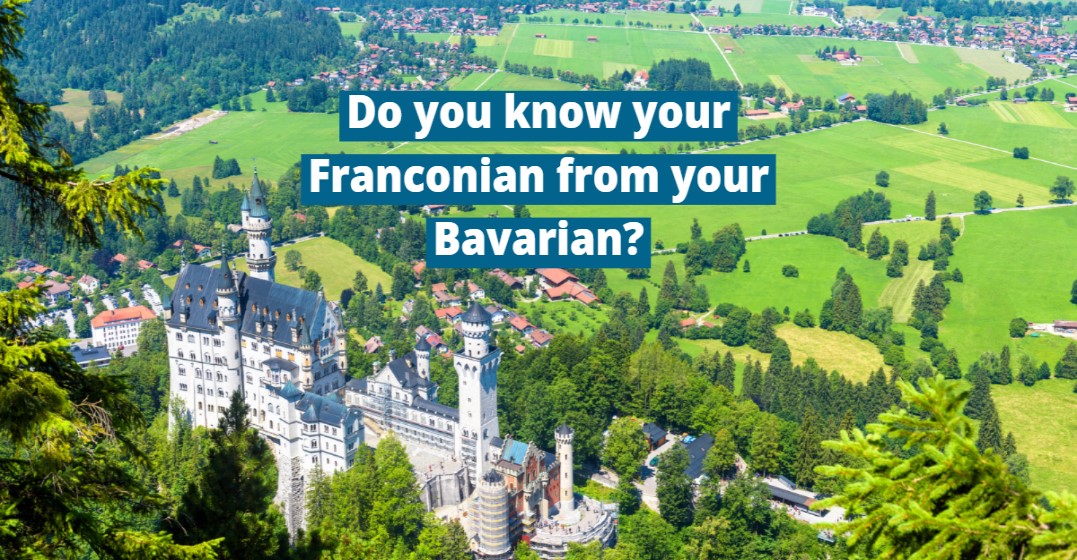by Erin McGann
Updated on October 16, 2024
If you live up north in Germany, or don’t live in Germany at all, I can imagine you may be wondering why we’re evening bringing this up.
Isn’t Franconia in Bavaria?
Oh dear, don’t say that down south, or you’ll be in for a very, very long lecture.
The northwest corner of Bavaria is the cultural region of Franconia, or Franken auf Deutsch. It includes Nuremburg, Erlangen, Bamburg, Würth, Würzburg, and Bayreuth, but doesn’t extend as far south as Munich.
Although it’s not recognised as a Bundesland, it is definitely a cultural identity that everyone in Germany recognises. It even has its own anthem: the Frankenlied. The region is split into Unterfranken, Mittelfranken, and Oberfranken. There several dialects that are called Franconian, but generally it is the East Franconian ones that most people mean when they say Fränkisch.
The Franconian flag is divided into two horizontal bars, the top one is red and the bottom is white, you whenever you see patriotic Franconian things going on, there will be lots of red and white around!
Yes, you’re right, good spot.
Franconia is indeed inside the political borders of Bavaria, but ask someone from that region and if their family is historically from the region they will definitely say they are Franconian.
Franconians in general distance themselves from the Bavarian stereotypes of Lederhosen, Dirndls, and Weißwurst, but don’t let that fool you, they are champion beer brewers. Just in the Franconian region alone there are 300 breweries. Of course, their wine region around the river Main is also famous. So while Franconia is in Bavaria, they are a culture apart, and their dialect makes this distinction very clear!
The dialect itself is quite round and fluid sounding, not as sharp and nasal as northern dialects. People explained to me that it sounds like there are no hard consonants – think Ds and Bs instead of Ts and Ps. Although it doesn’t score very highly on Germans’ favourite dialects, it tends to land around mid-table, it’s not made fun of in the same way people from Saxony are, for example.
Let’s look at some common examples of Fränkisch words and their counterparts in Hochdeutsch (High German, the standard version of the language you learn at Lingoda) and English.
On average, we see Bavarian thrown around a bit more in the rest of Germany because of its connection with Oktoberfest. I affectionately refer to the month of September as Bavarian-advertising month because it seems like everywhere from restaurants to grocery stores through in a bit of Bayerisch to make it seem more festive.
A jolly sounding dialect, Bavarian is very different to Frankish, despite being spoken in close proximity for hundreds of years. You can also hear Bavarian throughout Austria, and into some parts of Switzerland too. Let’s compare some Bavarian dialect words.
Bavaria’s flag is checked blue and white, so you will see this everywhere during September leading up to Oktoberfest, and in any of the many Bavarian restaurants throughout Germany.
So the next time you meet someone from Nuremburg, be sure to refer to them as Franconian rather than Bavarian, and you might very well make a friend for life.
